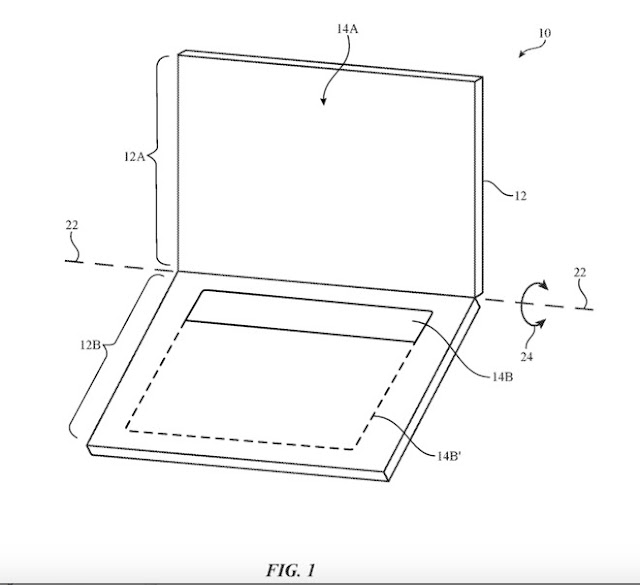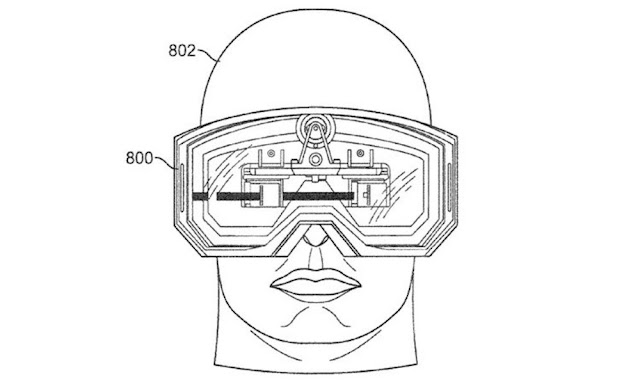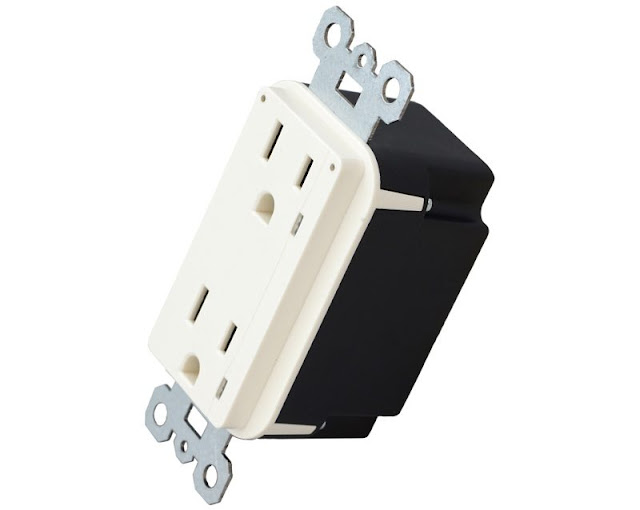For years, Apple has evolved towards an increasingly minimalist user interface. Inexactly, macOS works especially well, but I could make use of some modifications. By customizing some settings you can make
MacBook work even better for you.
If you are wondering if there are great ways to customize your
MacBook, then this is the article that you must submerge. You can quickly modify the look and feel of your Mac. Learn how to modify your Mac, adjusting your preferences to your personal taste.
How to Quickly Customize the Appearance of Your MacBook
It's a good idea to customize a MacBook, to make it yours. There are even websites devoted entirely to thematizing MacBook. Instead of using third-party tools to get different appearances, I'll show you what Apple already provides.
In this tutorial, we will be using the current version of the operating system, macOS 10.12 Sierra. You will find that the principles are the same for whatever version you are using, although with slight differences. Now let's play with some great ways to customize the Mac's visual settings.
1. Automatically modify the screensaver every few hours, or days
When it comes to computer metaphors, I've always struggled with the concept of putting a screensaver on the desktop. I guess changing the housecloth does not have the same effect in MacBook.
To change the screensaver, go to the
System Preferences> Desktop and Screensaver. You can also reach the same site by pressing the Apple symbol, in the upper left of the menu bar, or by pressing Command / Space to open Spotlight and enter Desktop to find the preferences.
Once you have selected a screensaver image, you will have the option to change it automatically in
MacBook. You can also configure how often it will change. Click on the box to place a mark in the Change Image box: and use the drop-down menu to select the desired interval.
If you prefer, it is possible to make the images on the desktop background show in a random order. Press the check mark to activate the Random Order.
To keep things organized, use a specific folder in iPhoto to save the images from the desktop background in MacBook. The Desktop and Screensaver panel is always kept up to date, so you will not have to worry about adding a new image when you download it.
On the other hand, you can use any folder on the MacBook, as long as it contains more than one image.
2. Use Active Corners to Show Screen Savers and Other Things
From the MacBook Desktop and Screen Saver preferences panel, press the Screen Saver tab to see the options for them. Down on the right there is a button called Active Corners ...
Active Corners is a macOS system feature that allows you to use the four corners of the screen to invoke certain actions, as indicated by its name. It could be to launch a screensaver, open LaunchPad, the Notification Center or anything else.
Move the mouse to the defined corner to activate the feature.
3. Add Separators to the Dock
Your MacBook dock may end up crowded with a host of application icons. If this happens to you, adding a space between the icons makes sense.
The spacers added by this command are invisible "tiles" that can be easily removed, if necessary, by dragging them from the dock to the outside.
To enable the empty tile, open the Terminal and enter the following command:
defaults write.com.apple.dockl persisent-apps – array-add '{“tile-type”=”spacer- tile”;}'; killall Dock
Once the command has been executed in MacBook, the dock disappears for a moment and it will be loaded again with an invisible tile to create the space.
The invisible tile can be dragged along the dock to place it where you need to create more space between icons, or drag it from the dock to the desktop to eliminate it if you no longer need it.
4. Change the Color Scheme of the MacBook OS System
If you prefer to highlight the text so that it has a different color than the default blue, open the System Preferences> General and change the Color of Enhancement: to another color.
Along with the eight colors of the menu, you can use the Other ... option to select any color from the selector.
There is another Appearance option here that changes the buttons, menus, and windows of all applications to a more monochrome option called Graphite. Blue and graphite are the only options, so if you like a very hard look and without those colorful buttons to close, minimize and increase located in the bars of the windows, they will be your preferred options.
5. Add Extension to the MacBook Dock, Hide it and Change its Position
By default, the Mac dock does not jump as you may have seen on other MacBook. That's because the increase is not enabled.
To enable it, press the Apple symbol, at the top left of the menu bar, select Dock, and press Activate Enlargement.
This menu also gives you the possibility to hide the dock, which is useful to maximize the screen space in your MacBook, especially in small screen laptops. When it is hidden, you can show the dock by moving the cursor to the part of the screen where it resides.
You can change the location of the dock and place it on the left or right side of the screen. The appearance of the dock will also change if you move it to the sides; its appearance is more two-dimensional and reminiscent of the one I had in OS X Tiger.
How to Customize the Menu Bar on Your MacBook
Many people do not get all the advantages of using the menu bar. Some applications use extra information, but there are other really creative things you can do with the information there. Let's take a look at some great ways to customize the Menu Bar on your MacBook.
6. Add Seconds and Date to Time
It is possible to display more than just the time in the menu bar. Click on the current time and select Open the Preferences panel "
Date and Time" to expand them. In the main tab you will find a place to adjust the Date and Time.
If it is correct, go to the Clock tab. Change the time options from Digital to Analog, and activate to your liking the boxes Show the time with the seconds, Blinking of the separators, Use clock of 24 hours, Show the indicators of a.m. /p.m., Show the day of the week, Show date in the menu bar and Announce the time in quarter intervals, half hours or full hours.
MacBook OS has many great hidden options to show the time. It is useful to have the date in the menu bar, and the seconds can be useful if you want to be punctual. Do not forget that you can change the format of the date in the Language and Region panel. I'll talk about this later.
7. Add the Battery Percentage and Life Time
If you have a MacBook and the battery indicator in the menu bar is only an icon, you will need to change this to see more information. When it's plugged in, press and select Show Percentage to give you a reading of the current charging status. Then unplug the charging adapter from the MacBook and test that the indicator works as expected.
Note: There used to be an option to show how long the battery could last with current usage, but it has been removed from Mountain Lion. If you are using an earlier version of OS X, press the battery icon and look for this option.
In any case, there is a small utility called Battery Time Remaining that tells you how much time it will take to deplete it. It is available on GitHub.
8. Change the Action when Inserting a CD or DVD
You may not always want a DVD player to open when you insert a video disc into your MacBook, if you still have a reading unit.
To change this behavior, open the CD and DVD panel in the System Preferences. Click on any function you want to modify and select "Open another application ..." Or, to completely deactivate the function, select Ignore.
You can even Run a Script ... if you have a custom function.
9. Adjust Spotlight Searches and How They Are Ordered
Maybe you have some private files that you do not need to list when you do searches. If so, you can exclude them from the Spotlight query system. Here is how to do it:
Open System Preferences in your MacBook and click Spotlight
Click on the Privacy tab
Press the + button to add a folder or a whole disc that you do not want to be shown
You can also adjust the way in which Spotlight displays the search results. On the Search Results tab, deselect any category you do not want to see, or drag them to sort them in your preferred order. Here you can also change the keyboard shortcut for Spòtlight.
10. Change the Default Dictionary in Your MacBook
The Apple Dictionary application is one of the most useful tools on the MacBook. It is simple and does your job well.
Although, if you're like me, you'll like to look up words in a real English dictionary: the British. To enable an alternative language in the app, go to the Preferences window and check the box you want to have in the main window.
There are ten dictionaries and thesauri included in the MacBook, and two of them are more resources than dictionaries, the Apple dictionary and Wikipedia.
11. Change the Application Icons on Your MacBook
If you are really determined to customize your MacBook and do your things, it is even possible to change the icons of the applications. There are utilities for this, but the process of changing the icon of an application manually on your MacBook is quite simple.
- Select the .png or .jpeg icon and open it with Preview. Press Edit, Select All, then copy the selection. The usual .png files do not work because they do not always have transparent backgrounds.
- Find the application you want to modify, select it, and click Get Info. You can also press the key combination Command-I.
- It's the small icon in the upper left part of the application and Command-V to paste the new icon.
To delete a custom icon, select the small one in the Get Info window and press Undo on the keyboard.
Manually: This technique works for most applications, but may not work for Apple owners.
12. Make the Finder Open in a Different Folder to All My Files
The new Macs display the All My Files directory by default when you launch the Finder.
Personally, I do not like this setting. Fortunately, there is a way to change it.
Go to the Finder Preferences in MacBook and select the General tab.
Choose a drop-down menu folder below The new Finder windows show.
Press Others to use any folder on your hard drive.
13. Adjust the Regional Variations on Your MacBook
If you live in the United States, the date format will be foreign to the rest of the world. Therefore, having a preference to change the format as an ascending format DD-MM-YYYY or descending YYYY-MM-DD makes sense. The latest is an ISO standard. You can order spreadsheets properly with the ISO format, for example.
You do not have to use the date format in the same way as the rest of the USA. You can modify this and other things, from the Language and Region panel of the System Preferences. Once there, click on the Region tab. Here is a list of what you can do:
Make the week begin on a given day - You might prefer that the calendar week start on Monday. Press the drop-down menu next to First day of the week, then select the day on which you want the week to start.
Change the Date Format - Press the Customize button next to the Dates section and arrange things as you like. Apple makes things extremely simple so you can drag and drop the values and sort them as you like. There is even an option to add the era, d.C.
Change the Time Format - milliseconds are part of the time. Apple leaves it to your choice on the Customize screen in the Hours section. Again, it is a drag and drop process.
Modify Currency Separators and Decimal Characters - Some people like decimals separated by commas and semicolons. If that's you, click Customize below the Numbers section and change things. You can change the values to any character.
Change to a New Currency or Unit of Measure - There are options for the currency and the units of measure you are using. There are lots of coins, but the units of measurement are only offered in the UK, US or Metric. The UK is not usual since it uses a mixture of imperial and metric measures.
14. Organize Your Folders Automatically
It is annoying to see a folder completely disfigured due to bad organization. The Finder has settings for this kind of thing, and they are located in the toolbar.
Press the button that looks like a small list of icons, as shown in the screenshot below, and then select the organization method that works best for you. Name is the best because you will always find things on your site.
Although
you can do anything, from Type to Size and Label. On the other hand, drag things out of the grid to mess up a bit.
15. Remove Desktop-mounted Discs
Maybe you do not want to see the CD or an external hard drive cramming your desktop.
To deactivate it, open the Finder Preferences and deselect one of the options Show these items on the desktop in the General tab of your MacBook.
This will eliminate some unnecessary things from the desktop.
16. Bring the Status Bar Back
There used to be a status bar to the bottom area of the Finder, which showed the size of a selection and number of files in a folder, as well as other useful information.
By default it was deleted in OS X 10.7 Lion, but you can always recover it with a keyboard shortcut: Command / (Command + Line Oblícula).
You can also do it by clicking on the View menu and selecting Show the Status Bar.
What Tips to Customize the MacBook Do You Have?
In this tutorial, we've shown you how to customize your MacBook, better organize things, change the default dictionary, reorder Spotlight results, show different desktop backgrounds and recover hidden functions that were in previous versions of OS X.
Although it is only an introduction. There are many more customization options for the Mac, such as drastically changing the appearance of the dock by applying a theme. The same can be done with the rest of the MacBook OS, although it does not take a while to get things to be perfect.



















